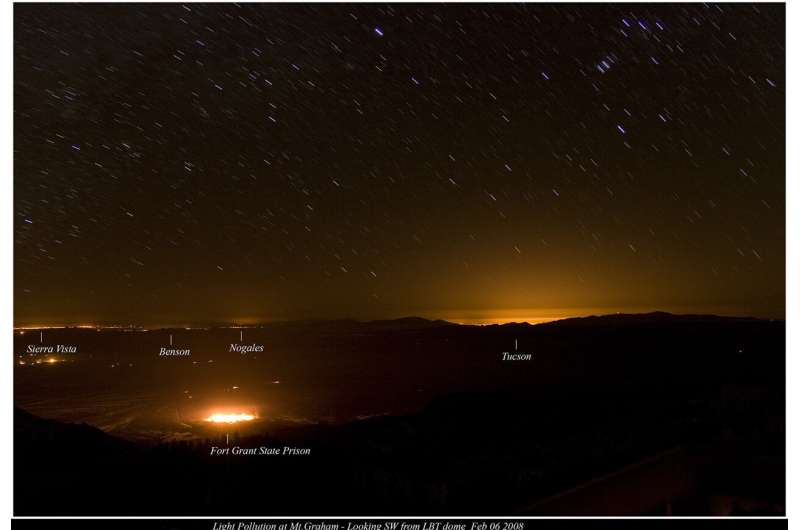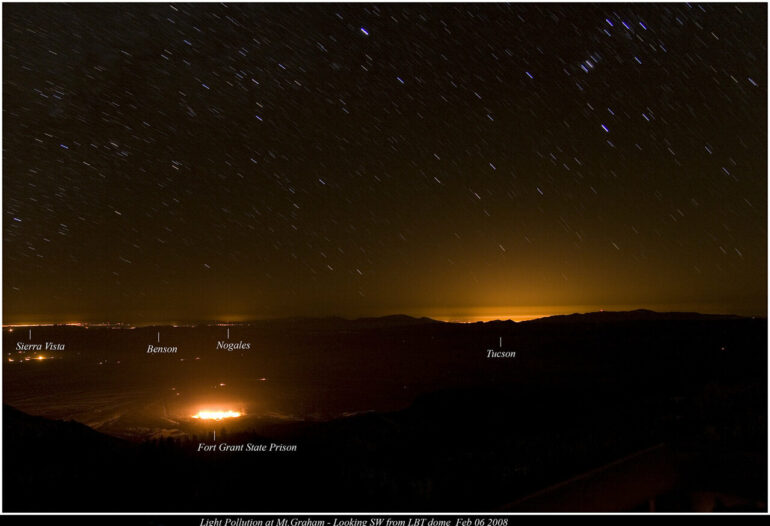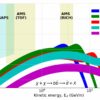Researchers from Italy, Chile and Galicia have studied and compared the light pollution levels at major astronomical observatories across the world. The study shows that light is polluting the sky above most observatories and that immediate action is needed to decrease the amount of contamination coming from artificial light. The work was published in Monthly Notices of the Royal Astronomical Society.
The study presents the light pollution levels above almost 50 observatories across the globe, including the world’s largest professional observatories, as well as smaller observatories for amateurs. The study utilizes a model of propagation of light in the Earth’s atmosphere and applies it to night-time satellite data.
Using additional light pollution indicators, beyond examining the traditional brightness directly overhead (i.e. at the zenith), reveals that the night sky at major observatory sites is more polluted than one may assume. The zenith is generally the less polluted, therefore darker, zone of the night sky, and is one of the indicators used to classify the sites in the study.
The additional indicators are the average brightness at a 30° altitude above the horizon, the average brightness in the first 10° above the horizon, the overall average brightness across the sky, and the illuminance of the ground given by the artificial light coming from the night sky. These indicators, along with the overhead brightness, help to decipher how artificial light affects the night sky.

Sources of light pollution in 2008 seen from the Large Binocular Telescope Observatory, Arizona. © Marco Pedani, Licence type Attribution (CC BY 4.0)
The key measure is the comparison with the natural sky brightness caused by airglow in the high atmosphere, and light originating from stars and the Milky Way.
The study results show that only 7 of the 28 major astronomical observatory sites (sites that host a telescope with a diameter of 3 meters or more) have a zenith sky brightness with light pollution below the expected threshold of 1% of natural sky brightness, and so could be considered almost uncontaminated in that direction. This leaves the remaining 21 other major sites—three quarters of all the major observatories—all above this level.
The lowest pointing direction of ground-based telescopes is around 30° above the horizon. Only one observatory of the 28 major sites has light pollution in that direction below the 1% level. A more relaxed 10% limit was set by the International Astronomical Union in the 1970s as the maximum allowable artificial brightness for major observatories. The new study shows that light pollution at two thirds of the ground based observatories in the study has now crossed this higher threshold.
Research lead Dr. Fabio Falchi says “the least contaminated of all the sites in the study is a lodge in Namibia that hosts several telescopes that are rented to amateurs for visual, photography and research uses. I was recently there and I can confirm that it is the least light polluted site I’ve ever seen.” He adds, “We must try to decrease the light pollution levels at other sites in order to protect the future of ground-based astronomy.”
More information:
Fabio Falchi et al, Light pollution indicators for all the major astronomical observatories, Monthly Notices of the Royal Astronomical Society (2022). DOI: 10.1093/mnras/stac2929
Provided by
Royal Astronomical Society
Citation:
Three quarters of major observatories affected by light pollution (2022, December 20)



